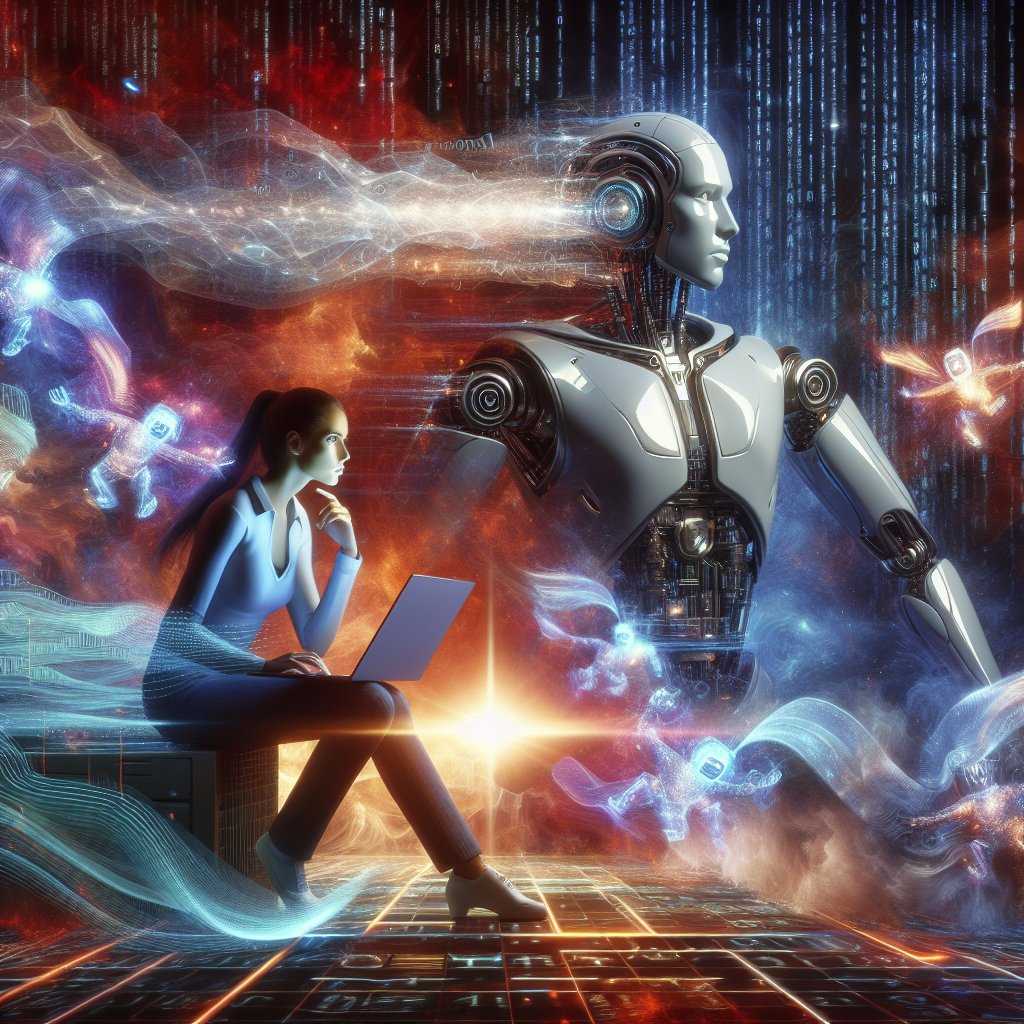The Battle of the Bots: Is AI or Human Code Tougher Against Tech Bugs?
Hey, tech enthusiasts! Today, we’re diving into a super-hot topic that’s been buzzing around the tech world: Are Large Language Models (LLM)-generated codes like those from ChatGPT as robust as the lines meticulously typed out by human developers? In a world increasingly relying on AI for everything from art to software coding, it’s a crucial question with implications for the future of coding and cybersecurity.
What’s the Big Idea?
So let’s break it down. The research we’re discussing here is all about finding out whether AI-generated code can hold its ground against some nasty cyber traps known as adversarial attacks. These attacks are like sneaky viruses that test if the code can still perform accurately under a bit of digital strain — think of it like a stress test for code!
Traditionally, automated code generation has been a dream for developers, and it’s finally taking shape thanks to advances in technology, especially with the rise of LLMs like ChatGPT. According to industry reports, nearly all developers have started integrating these AI helpers into their coding process. With their widespread use, it's essential to evaluate if they are as secure as their human-written counterparts.
Getting Techie: What Did the Research Do?
The academic geniuses behind this research, Md Abdul Awal, Mrigank Rochan, and Chanchal K. Roy, decided to dive deep into the realm of code security. They conducted a comprehensive study comparing the robustness of code written by humans versus code generated by LLMs, specifically focusing on handling adversarial attacks in software clone detection scenarios.
Here's what they did: They selected two datasets — one with human-written code and another with code generated by LLMs. Then, using innovative techniques, they fine-tuned a set of AI models (fancy term: Pre-trained Models of Code or PTMCs) on both types of data to see which could better withstand malicious digital poking and prodding.
They looked at two main aspects:
1. Effectiveness of Attack: They checked which type of code (AI-generated or human-written) allowed fewer successful attacks.
2. Quality of Adversarial Code: They analyzed how much the adversarial tactics altered the code, looking for minimal changes which indicate lower vulnerability.
A Quick Primer on Adversarial Attacks
If you're imagining some hacker creeping through the digital bushes, let’s simplify. Adversarial attacks are more like mischievous gremlins tweaking the code to try and mess with its intended function without outright breaking it. They’re designed to test the robustness of code — making sure it doesn’t fall apart with slight changes.
For instance, in the tech visuals landscape, you can think of it as a bit like showing a computer a photo of a cat and then making it unsure whether it's looking at a cat or a dog by editing just a pixel or two. In code, it’s all about maintaining function and structure even when sneaky edits are made in the syntax.
The Surprising Results
So, what happened? The research team found some intriguing results:
Code Robustness: Human-written code came up top! The models fine-tuned on human-generated code showed stronger resilience when tailored adversarial attacks came knocking. This means they’re less likely to be fooled by the gremlins!
Adversarial Code Quality: When looking at how much of the code was changed under attack, the segments generated by humans again generally needed fewer changes to hold up compared to those generated by AI. This happened in about 75% of the experimental setups.
Why Should You Care?
This isn’t just academic mumbo jumbo — it has real-world applications! Companies are increasingly reliant on AI to generate code, and knowing its limitations helps better prepare for potential security threats. If AI-generated code is more vulnerable, it signals a need for human oversight and possibly more robust AI training methods to shield the tech infrastructure against malicious attacks.
Moreover, with AI integrating into more aspects of our digital lives, understanding where it complements human capabilities or falls short empowers us to use these tools smarter and safer way. It emphasizes a collaborative future of human-AI coding rather than a technological takeover.
Key Takeaways
- Human vs. Machine: Human code-writing still holds the crown for security robustness against adversarial attacks.
- AI Augmentation: While AI tools like ChatGPT can accelerate software development, they may need backup when it comes to security.
- Future Development: Knowing AI-generated vulnerabilities helps fortify how we might develop more resilient AI coding tools.
To wrap it up, as we ride the wave of AI advancements, let's ensure that these tools complement and enhance our coding prowess rather than replace expert human input. Every tech solution — coded by people or generated by bots — has its place, but we need to be smart about blending the two.
Stay curious and keep coding! 🖥️📊
Did you find this article insightful? Have thoughts or a fresh perspective on AI vs. human coding? Share your insights in the comments below or give it a thumbs up if you’re excited about the future of AI and coding together.

